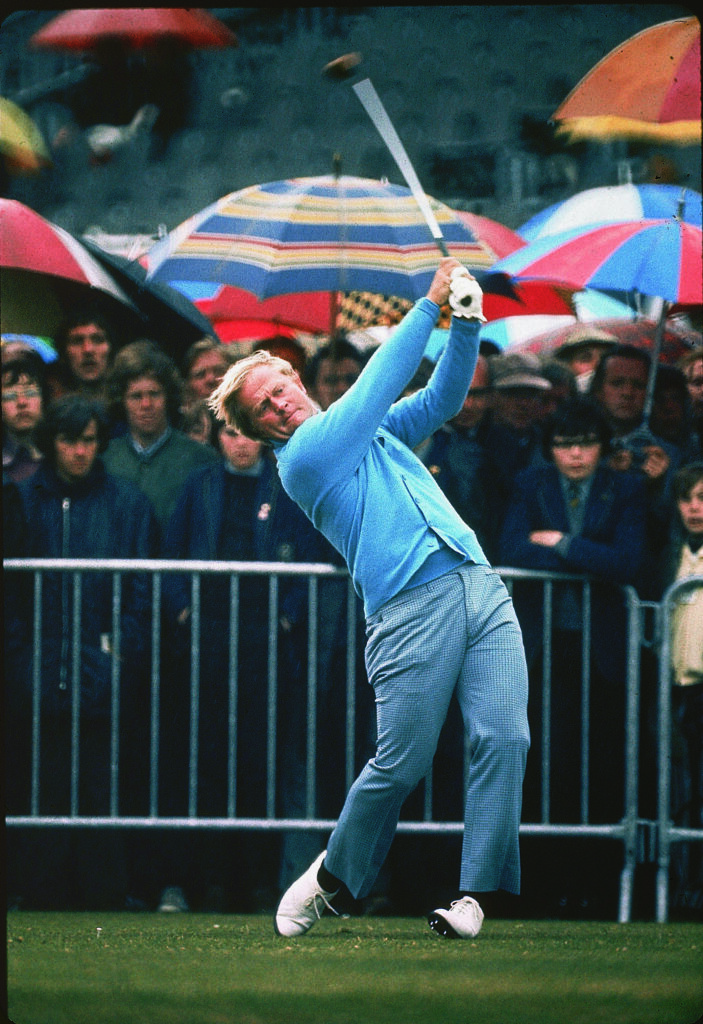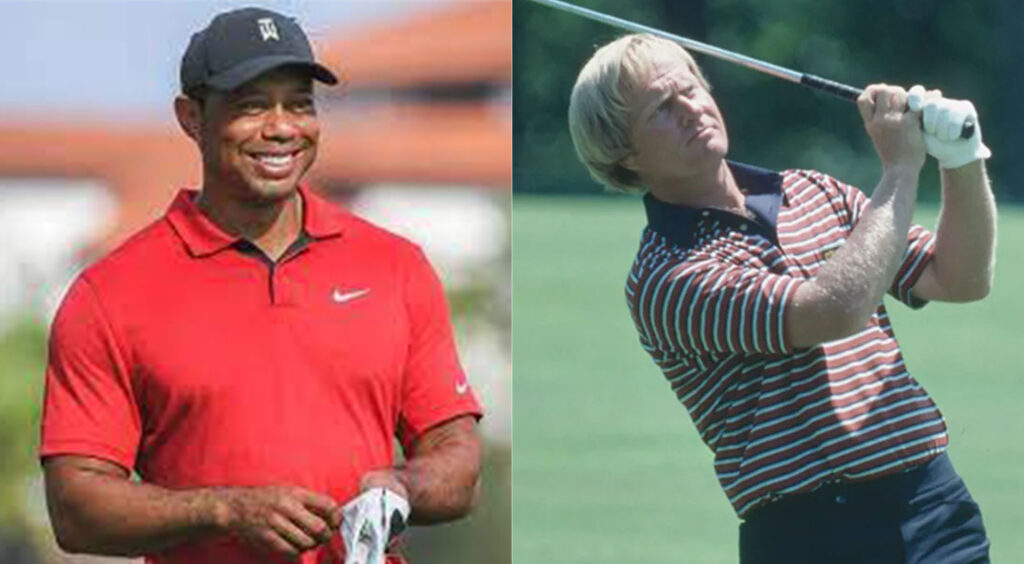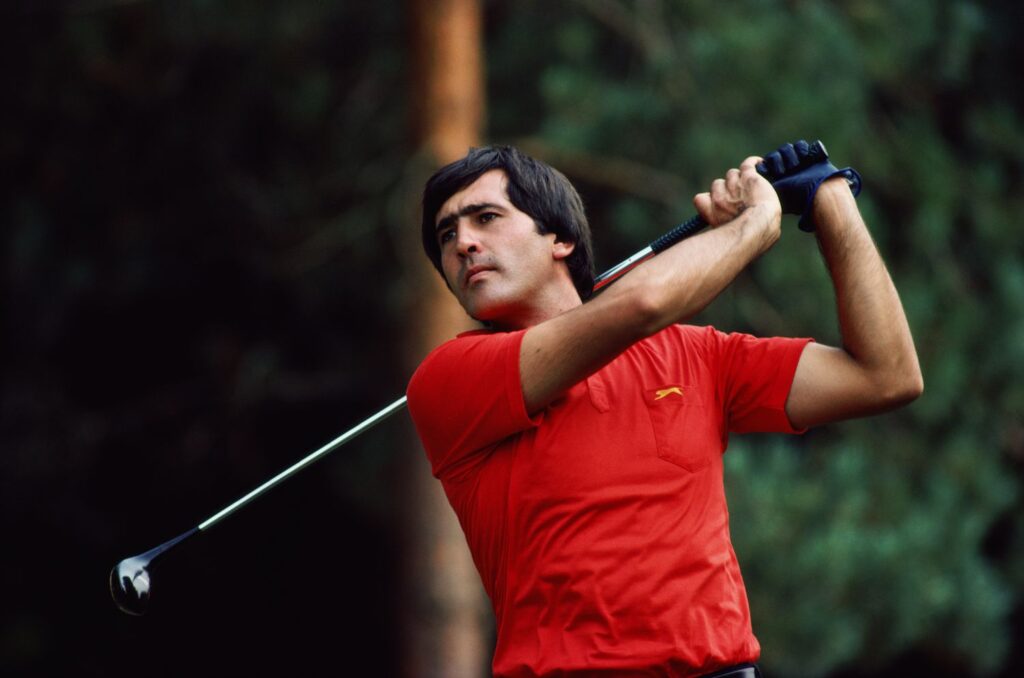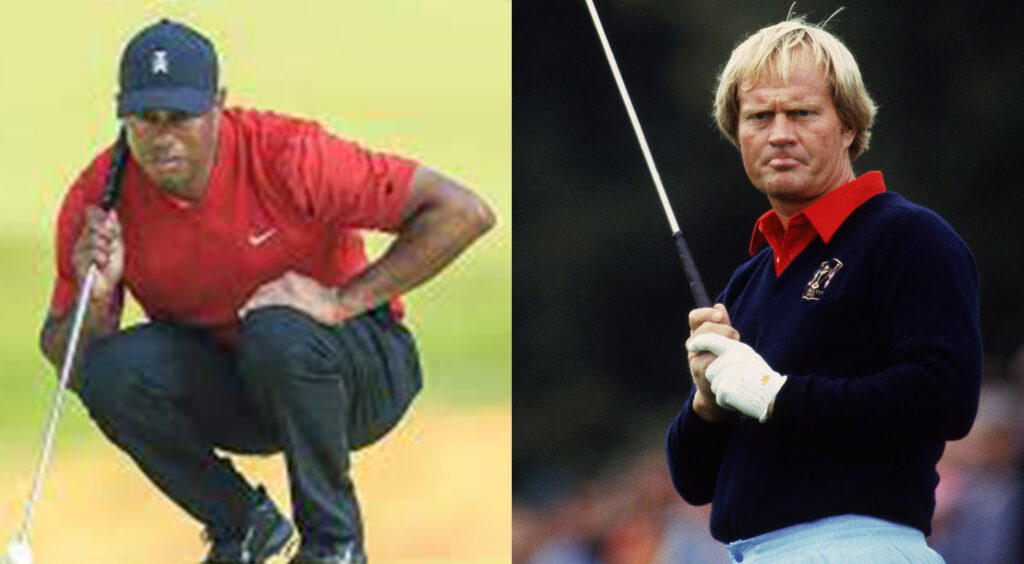
Every golfer has heard the saying “drive for show, putt for dough,” but you’ll find that’s pretty far from the truth once you’ve logged a round or two.
Think about your best days on the course. No doubt you holed some putts—but it’s pretty much guaranteed the driver was operating at or near full capacity. Golf is a whole lot easier from the middle of the fairway—and exponentially so when you’re hitting wedge into the green as opposed to middle or long iron.
You also have to work pretty hard to make a double after a solid drive in the fairway, but a snap hook tee ball that disappears in the woods or a weak flare that settles down in heavy rough a couple hundred yards from the green generally spells bogey at best.
A good way to demonstrate the paramount importance of driving is to look at the top echelon players in professional golf—and they have almost universally been big hitters down through the years.

The Longest and Greatest
Jack Nicklaus and Tiger Woods are without question the greatest players in golf history, and also among the longest off the tee. Many consider Nicklaus the longest of all-time (according to Bobby Jones, Jack was ‘playing an entirely different game, and one which I’m not familiar with”). Unfortunately, official driving stats weren’t tracked by the PGA Tour until 1980 when Jack had already hit 40, but he still came in at No. 10 in distance and No. 1 in total driving with accuracy factored in (he hit 71.5% of the fairways).
Before knee and back injuries slowed him down in 2008, Tiger was in the top 10 for distance every year with the exception of 2003 (11th) and 2007 (12th). In 1999 Tiger was 3rd in distance and 4th in Total Driving, while piling up 7 Tour wins plus a major and 7 additional Top 10’s.
In 2000 Tiger amped up the big stick even further, finishing 2nd in distance and No.1 in total driving on his way to 3 major championships, 7 more regular tour titles and another 7 Top 10’s,
Driving and the World Number 1’s
Since the World Golf Rankings were established in 1986, twenty-five players have reached number 1 in the world and the vast majority have been long off the tee. Bernhard Langer was the first to hold the Number 1 moniker after his win at the ’85 Masters (yes, the same Bernhard who is still winning on the Champions Tour). Although Langer was not generally regarded as a long hitter, he ranked 17th in distance on the PGA Tour in ’85.

https://www.nytimes.com/2021/10/29/sports/golf/greg-norman-pga-saudi-arabia.html
Norman and Seve
Following Bernard’s brief tenure as No. 1, the top spot oscillated between Greg Norman and Seve Ballesteros though the end of 1990. Norman held World Number 1 longer than any player other than Tiger (331 weeks), and he is also regarded by many as the greatest driver of all time.
From 1984 to 1994, Norman was among the top ten in driving distance every year but two (No. 15 in 1989 and No. 32 in 1992). Not only was he long, but he was straight as well—No. 1 in total driving in 1988, 1989 and 1993 plus 5 years in the top ten.

https://www.liveabout.com/seve-ballesteros-pictures-4056191
Seve Ballesteros played predominantly on the European Tour (now the DP World Tour) and driving distance stats are sketchy, but he possessed a powerful (though somewhat erratic) tee shot. Seve drove the green on the Par 4 10th hole at the Belfry a number of times, a 290 plus yard carry over water calling for a high cut, including at the 1989 Ryder Cup where he dropped an Eagle putt from inside twenty feet. Keep in mind he was using a persimmon driver with a soft ballata golf ball, and the average distance off the tee on the PGA Tour that year was just under 262 yards.

https://www.britannica.com/biography/Tiger-Woods
Tiger
Tiger held the top spot in the World Golf Rankings from 1999 through 2010 with the exception of 6 months in 2004/2005 when Vijay Singh (another fantastic driver of the ball) briefly moved into the No. 1 position. In all, Tiger was World Number 1 for an astounding 683 weeks—and an intimidating presence on the tee.
Between 1997 and 2007, Tiger was among the top five in distance six times, and the top ten every year but two (11th in 2003 and 12th in 2007).

https://www.cnn.com/2022/08/22/golf/rory-mcilroy-remote-controlled-ball-fan-spt-intl/index.html
Rory, DJ and Brooks Koepka
Rory first reached number 1 in the world back in 2012 when he had just turned 23 years old, and has held the Number 1 position on and off for a total of 122 weeks (most recently from October ’22 through February ‘23).
And of course, McIlroy can bomb it with anybody (picture that majestic high draw that seems to carry forever). Since 2017 Rory has been either first or second in driving distance every year but one (4th in 2020) and led the Tour in distance last year averaging 326.3 yards.

Dustin Johnson ascended to World No. 1 in 2017, and is behind only Tiger and Greg Norman for the longest time at the top (135 weeks). From 2009 through 2021, Johnson ranked among the top 5 in distance every year but 3 (6th in 2018, 10th in 2020 and 7th in 2021).
After winning the CJ Cub on the heels of two major championships (US Open and PGA), Brooks Koepka first assumed World Number 1 in October of 2018, and through February of 2020 he spent 47 weeks at the top. Between 2014 and 2019 Brooks finished outside the top 10 in driving distance only once (19th in 2016).
Knee and hip injuries at the end of 2019 through 2020 severely impacted Koepka’s driving distance and his ability to compete, but after rehab he was injury free in 2023 and recorded a runner up at the Masters, a win at the PGA and a top 20 at the US Open (where he was also second in driving distance averaging 320.6 yards).

Scheffler and Rahm
Jon Rahm or Scottie Scheffler have occupied the top spot in the World Golf Rankings since June of 2021 with the exception of DJ for a week in July of ’21 and Rory from October ’22 through February ’23.
Not surprisingly, both are fantastic drivers of the ball. Since 2017, Rahm finished outside the top 20 in distance only once (22nd in 2020) and was #1 in Total Driving twice—2021 and 2022. Scheffler has plenty of distance (16th in ‘20 and 19th in ‘22) while finishing among the top 10 in total driving 3 of the last 4 years (his lowest ranking was 13th in 2022).
The Putting Factor
There is no question that both Jack and Tiger were amazing putters, particularly on critical putts under maximum pressure, but while putting prowess separated them further from the field, the incredible record they each achieved would not have been possible without the power game.

Luke Donald possesses one of the finest putting strokes ever seen on the PGA Tour, finishing first in putting from 2009 through 2011. Luke was also a fantastic iron player, but struggled from the tee throughout his career.
In 2010 Donald ranked 186th on tour in total driving, but made a dramatic jump in both distance and accuracy in 2011, allowing him to ride that great putter all the way to #1 in the world. Unfortunately, Luke’s difficulties from the tee returned in 2013 and as his driving numbers dropped each year, so too did his world ranking—even as his putting stroke remained as silky as ever.
This is not to minimize the importance of putting, only to illuminate the fact that driving is far and away the biggest factor in determining success on the golf course. Power players have reached #1 in the world without being particularly good putters (Freddie Couples and Vijay Singh come immediately to mind), but some of the greatest putters in modern history who were not great drivers of the ball are conspicuously missing from the list of #1’s (Ben Crenshaw, Corey Pavin and Brad Faxon for example).
Bottom line is you drive for the dough, and putt for—well, some additional dough perhaps…







